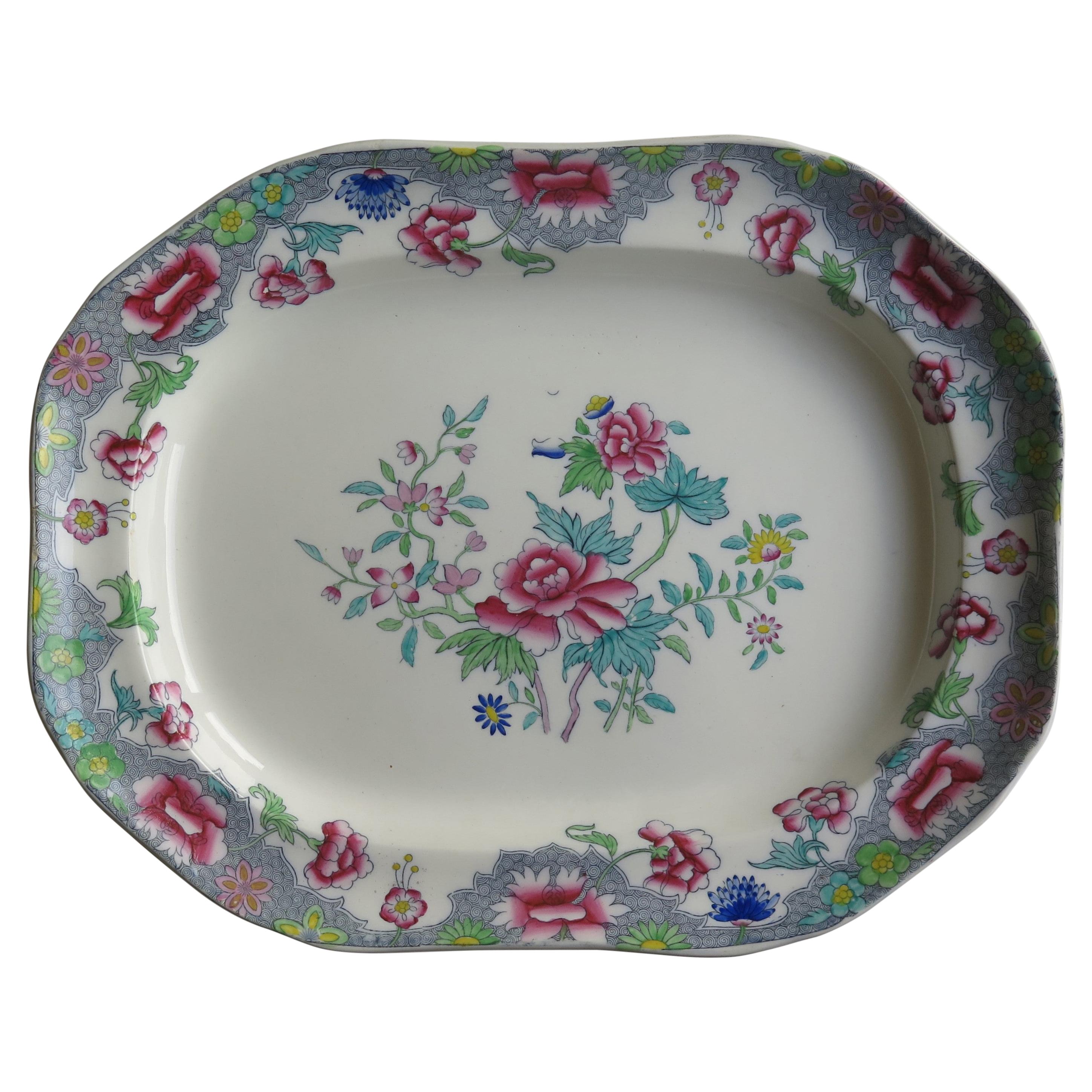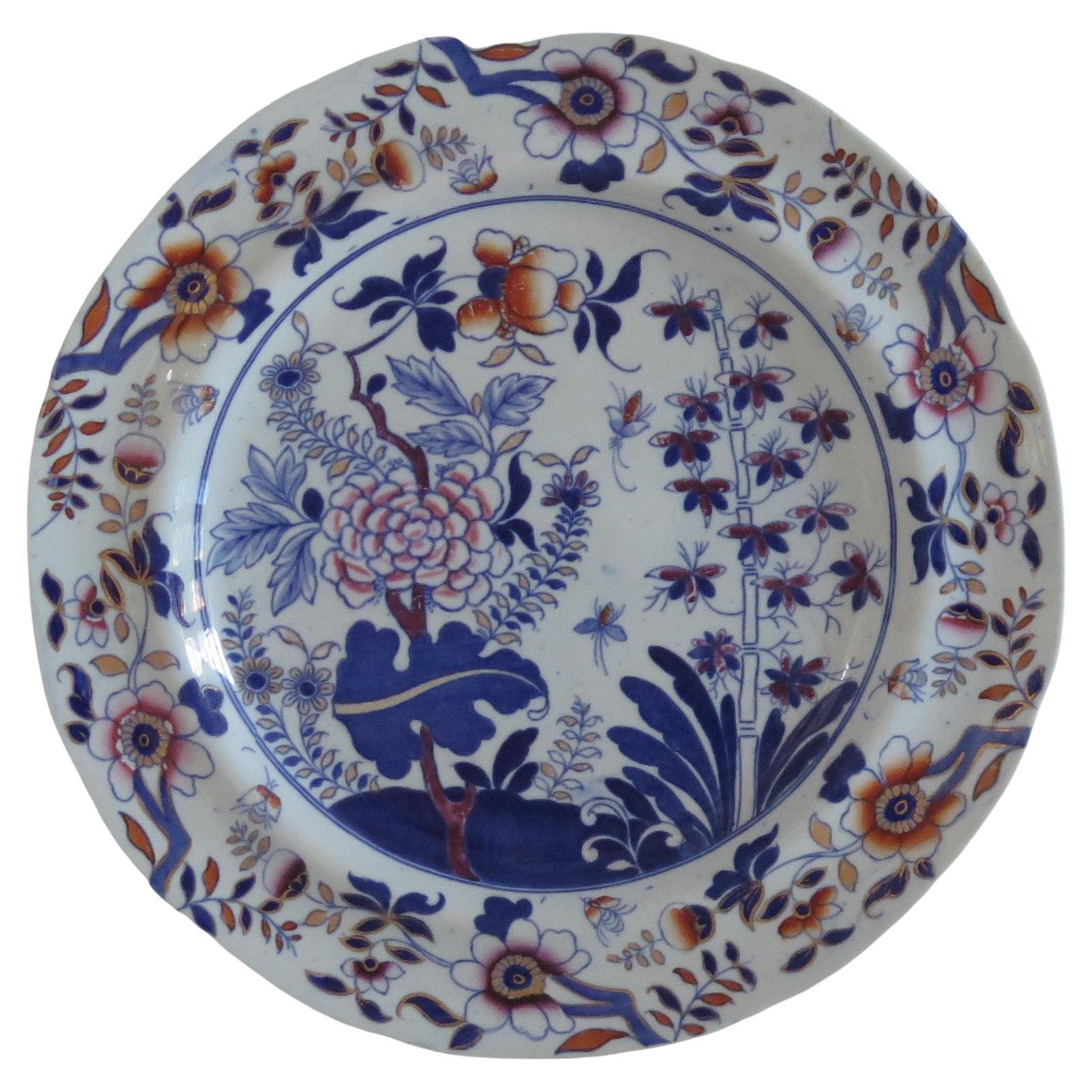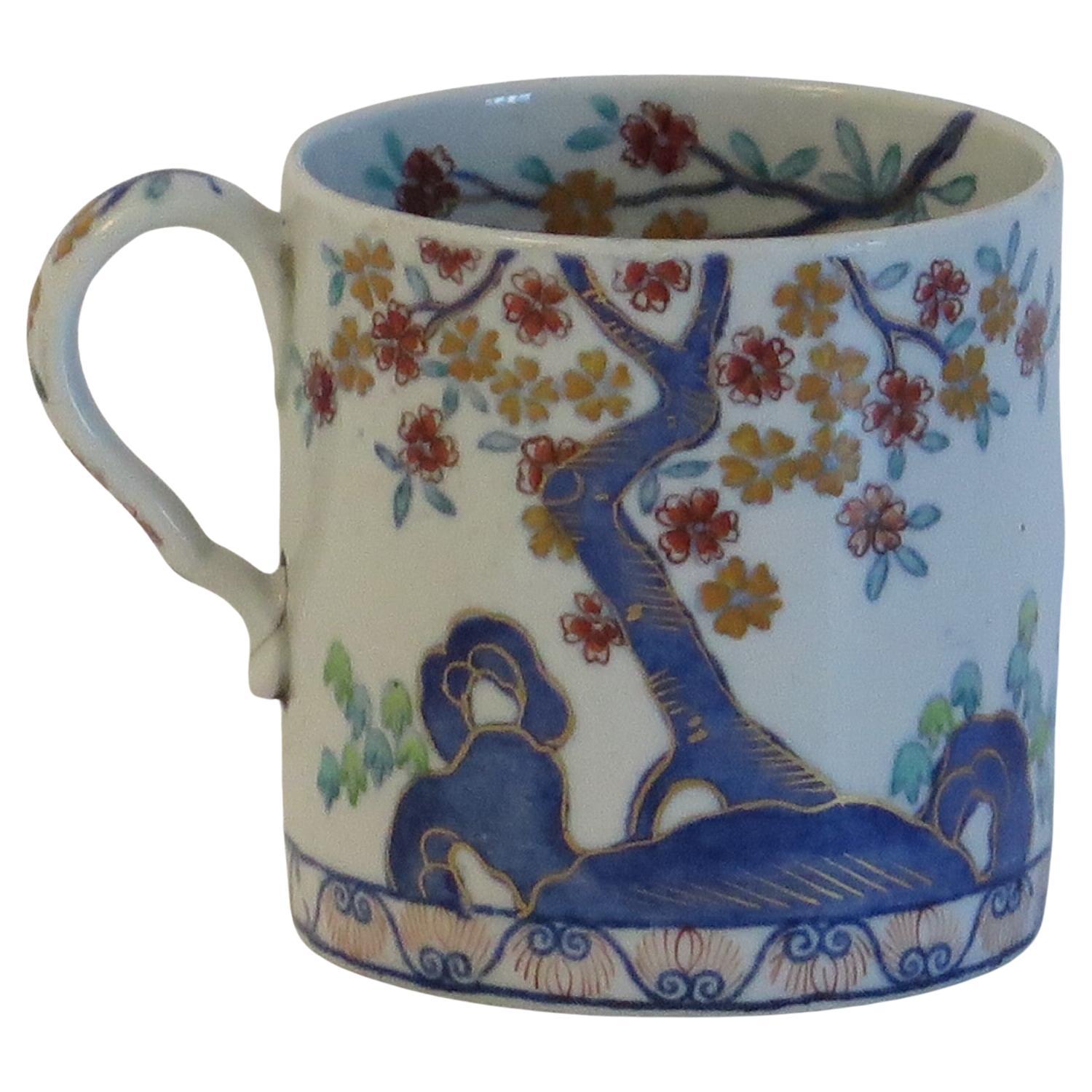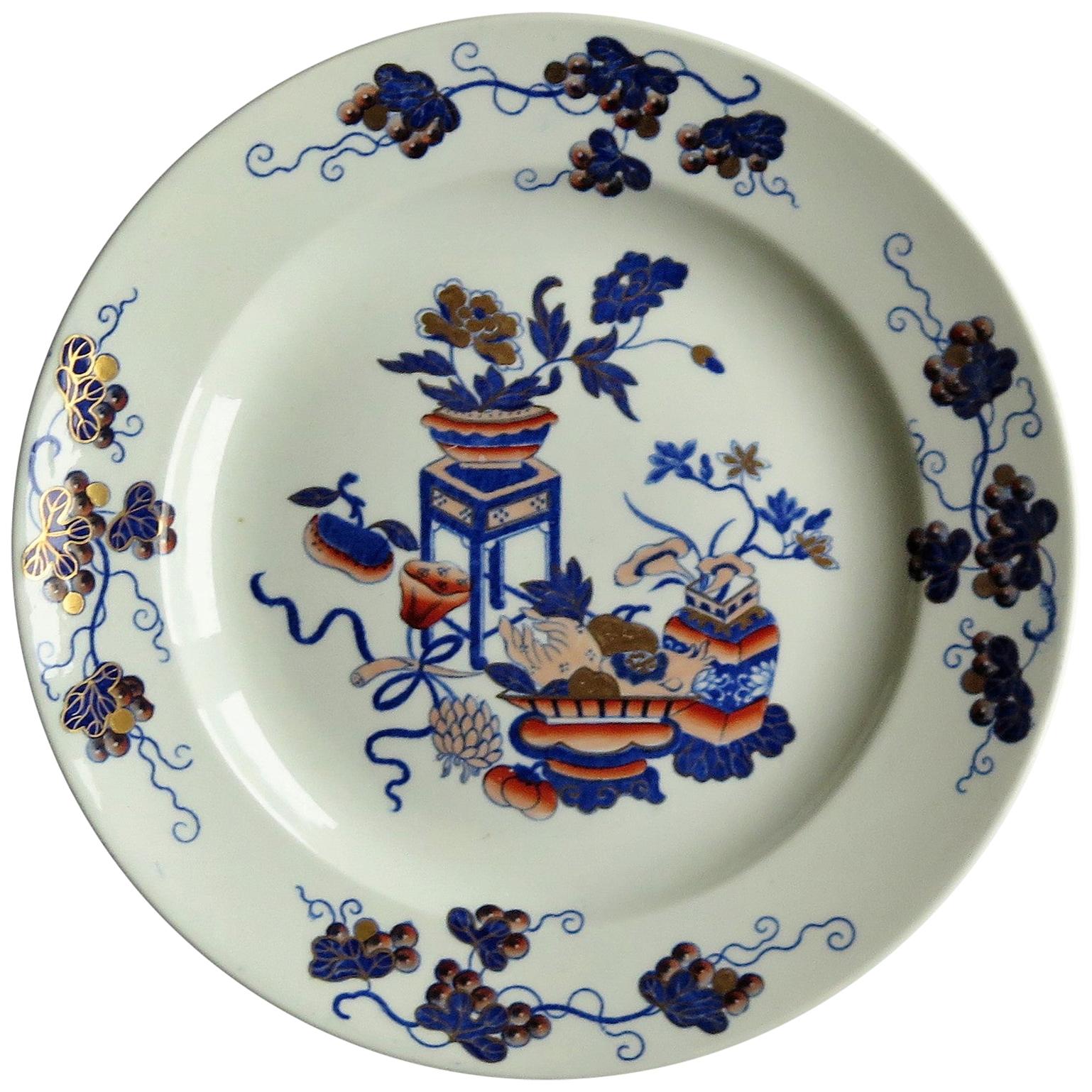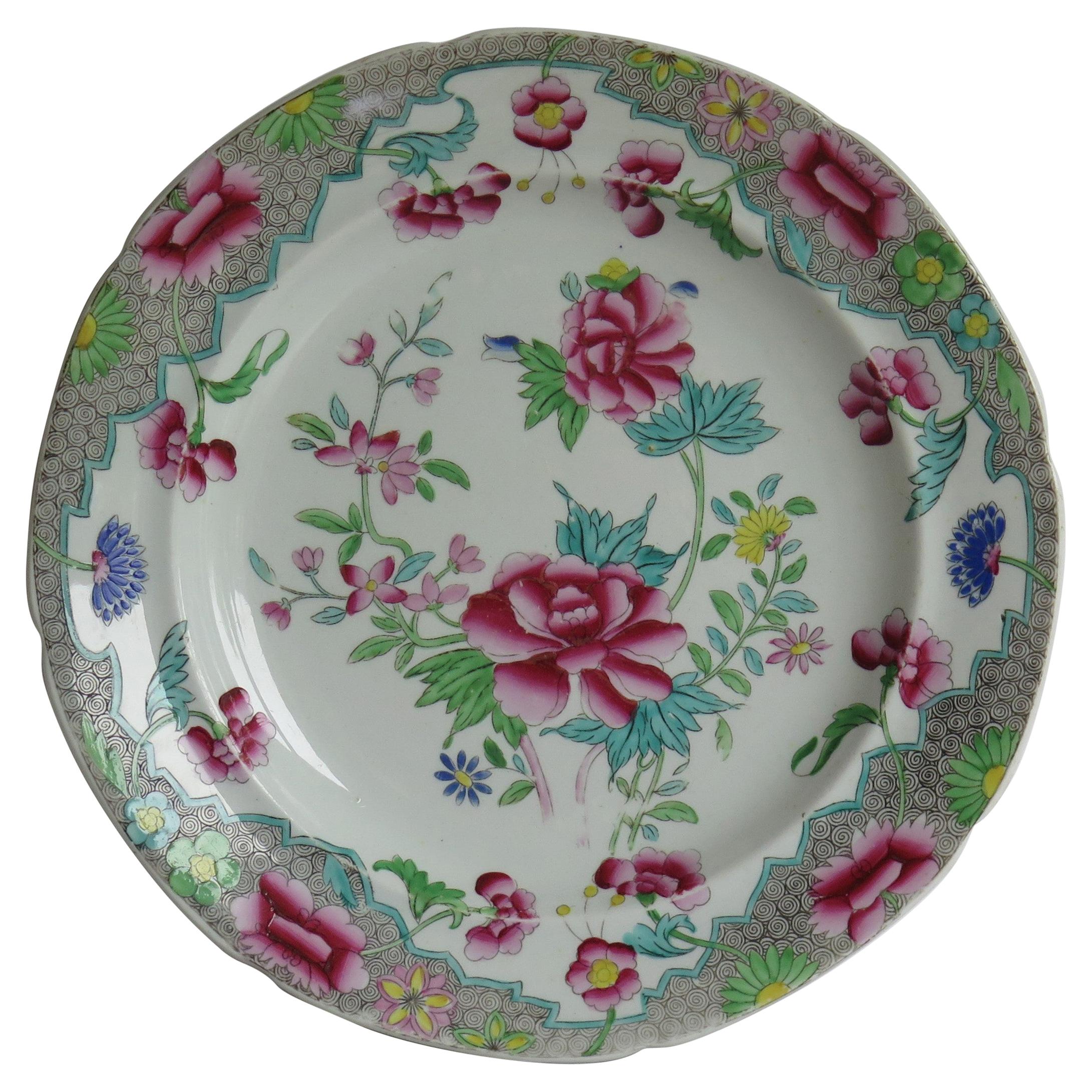Plate by Copeland Late Spode in Japanese Kakiemon Pattern No. 2117, circa 1850
About the Item
- Creator:Copeland Spode (Manufacturer)
- Dimensions:Height: 0.82 in (2.09 cm)Diameter: 8.04 in (20.43 cm)
- Style:Chinoiserie (Of the Period)
- Materials and Techniques:
- Place of Origin:
- Period:
- Date of Manufacture:circa 1850
- Condition:Wear consistent with age and use. NO Damage, NO Restoration. Some pattern wear.
- Seller Location:Lincoln, GB
- Reference Number:
Copeland Spode
Steeped in British history and tradition, the name Copeland Spode is renowned among porcelain collectors for its fine-quality bone china and earthenware pieces. With its roots in Spode — one of the oldest and most distinguished of the great pottery companies of Staffordshire, the time-honored home of English ceramics — Copeland Spode is known to pottery enthusiasts for some of the most timeless and recognizable patterns produced in 19th and early 20th-century porcelain manufacturing such as Wicker Lane, Chinese Rose and Tower. Collectors regard Copeland-marked pieces as Spode china.
The story of Copeland Spode china began in 1770 when English potter Josiah Spode founded a pottery and homewares company called Spode in Stoke-on-Trent, England. Within fifteen years, the manufacturer became known for its signature blue-on-white palette, and one of the company’s designers developed a specific cobalt hue for their teapots, trays, bowls and more. Spode’s founder was particularly revered for two technical achievements in the firm’s early decades. The first was to develop a standard formula for the making of bone china — a type of porcelain (made with a mixture of bone ash, minerals and clay) that is dazzlingly white and so strong it can be used to create very thin translucent plates and vessels. The other was to perfect the making of transferware.
In 1833, entrepreneurs William Taylor Copeland (the Lord Mayor of London at the time) and Thomas Garrett purchased Spode’s pottery-making company following the death of Josiah Spode III, and the name was changed to Copeland Spode. Then, in 1847, Copeland became the firm’s sole owner and the name changed again, this time to W. T. Copeland and Sons, in 1867 when Copeland retired and his four sons took over the business.
Trading as W. T. Copeland and Sons throughout the mid-to-late 19th century, the company found a formidable competitor in another well-known porcelain maker, Minton. Many of the manufacturer’s Georgian, Rococo and late-Victorian pieces such as its dinner plates, tableware, platters, bowls and baskets were commissioned by wealthy British and European clients and exported for sale throughout the British Empire and to the United States. Several of W. T. Copeland and Sons’ spectacular pieces were exhibited at the Great Exhibition of London in 1851 and the International Exhibitions of London and Paris in 1862 and 1878, respectively.
In addition to their exceptional quality and design, the company’s ceramics were particularly prized for their intricate patterns which featured a variety of colors. For instance, its popular Tower pattern was available in a pale ultramarine blue, a darker Royal Saxon blue, rose pink, brown and green.
The company continued as W. T. Copeland and Sons until 1970 when Spode again became the brand's name. Afterward, during the late 1970s, Spode, Royal Worcester and Palissy came under common ownership. In 2009, the firm was purchased by the Portmeirion Group. However, the Spode and Royal Worcester names continue to flourish as highly popular “traditional English heritage” brands within the Portmeirion company.
Find antique Copeland Spode serveware, decorative objects and more collectibles on 1stDibs.
- ShippingRetrieving quote...Ships From: Lincoln, United Kingdom
- Return PolicyA return for this item may be initiated within 3 days of delivery.
- Dinner Plate by Copeland Late Spode in Chinoiserie Pattern No. 4089, circa 1850By Copeland SpodeLocated in Lincoln, LincolnshireThis is a beautiful plate in the Chinese inspired pattern number 4089, produced by the Copeland - Late Spode factory and made of earthenware pottery called Pearl-ware, in the mid 19th century, circa 1850. This plate is well potted with a recessed rim. The pattern is transfer printed under-glaze in cobalt blue, then carefully hand painted in bold coloured enamels over-glaze in Gilt Heightened, Rare Pattern Number '4089' which Depicts Oriental Flowers including Bamboo, Peonies and Prunus Blossom in a garden setting with insects. Similar plates of this period are shown in Steven Smith's book called Spode and Copeland, published by Schiffer. The plate is fully marked to the base, with a transfer printed Copeland Late Spode...Category
Antique Mid-19th Century English Chinoiserie Ceramics
MaterialsPottery
- Georgian Spode Coffee Can Ironstone Kackiemon Pattern 2117, circa 1820By SpodeLocated in Lincoln, LincolnshireThis is a good stone China (Ironstone) coffee can made by the SPODE factory in the early 19th Century, circa 1820. The coffee can is well potted with cylindrical shape and a loop handle with the distinctive Spode kink to it. The piece is beautifully decorated with hand painted enamels in the chinoiserie Kakiemon style, pattern number 2117. It has the Spode Stone China blue printed...Category
Antique Early 19th Century English Georgian Ceramics
MaterialsIronstone
- Georgian Plate by Spode in Gilded Bow Pot Pattern Number 2954, circa 1820By Josiah SpodeLocated in Lincoln, LincolnshireThis is a beautiful plate in the Bow Pot pattern, produced by the Spode factory and made of a type of earthenware pottery called Pearl-ware, in the early 19th century, circa 1820. ...Category
Antique Early 19th Century English Chinoiserie Pottery
MaterialsPearlware
- Mid 19th C Copeland / Spode Large Platter or Meat Plate pattern 8036, Ca 1850By Copeland SpodeLocated in Lincoln, LincolnshireThis is a beautiful large Platter or meat plate by Copeland (formerly Spode) in a very decorative floral pattern No. 8036, England, dating to circa 1850. The piece is well potted ...Category
Antique Mid-19th Century English Victorian Ceramics
MaterialsPottery
- Copeland-Spode Large Ironstone Platter in Chinese Figures pattern, Ca 1900By Copeland SpodeLocated in Lincoln, LincolnshireThis is a beautiful very large Platter or Meat Plate by Copeland (formerly Spode) in a very decorative hand painted Chinese figure pattern, dating to the turn of the late 19th Centur...Category
Antique Late 19th Century English Chinoiserie Ceramics
MaterialsPottery
- Georgian Hicks and Meigh Ironstone Plate in Floral Pattern No.8, Circa 1815By Hicks & MeighLocated in Lincoln, LincolnshireThis is a good ironstone side plate in hand painted floral pattern No. 8, made by Hicks and Meigh of Shelton, Staffordshire, England between 1812 and 1...Category
Antique Early 19th Century English George III Ceramics
MaterialsIronstone
- Copeland Spode Ceramic Bread and Butter Plates in "Buttercup" Pattern, Set of 11By Copeland SpodeLocated in Oklahoma City, OKA set of 11 bread and butter plates by Copeland for Spode. This set features 11 round plates with a yellow, blue, and green floral pattern on a cream background. A basketweave design...Category
Antique Late 19th Century English Victorian Ceramics
MaterialsCeramic
- Antique English Copeland Late Spode Toby Jug Pitcher Colonial EnglishmanBy Copeland SpodeLocated in Dayton, OH19th century Copland Late Spode English Staffordshire rare porcelain toby jug in the shape of asdeated colonial Englishman holding a cup and pitcher. 180288...Category
Antique 19th Century Federal Porcelain
MaterialsPorcelain
- Set of 10, Antique Copeland Spode Armorial Dinner Plates C. 1950By Copeland SpodeLocated in Atlanta, GAA semi-antique set of 10 Copeland Spode New Stone (made 1920-1960) dinner plates having a navy a armorial central medallion adorned with a bird of prey and a navy and gold leaf aroun...Category
20th Century English Ceramics
MaterialsPorcelain
- Copeland-Spode English Tray with Blue Transferware DecorationsBy Copeland SpodeLocated in Prato, TuscanyWe kindly suggest you read the whole description, because with it we try to give you detailed technical and historical information to guarantee the authenticity of our objects. Elegant and refined English octagonal ceramic tray; on the white background, soft and rich blue decorations have been executed using the transferware method; in the center we find the poetic and graceful representation of the Severn River and the town of Bridgnorth (the name of this decoration is "Severn"), while the edges of the tray are adorned with sumptuous and spectacular flower and leaf decorations. The Severn River is the longest river in the United Kingdom (350 km), rising in Wales and flowing into the Bristol Channel; Bridgnorth is an ancient Saxon settlement; observing the view of the river and town from his castle at Bridgnorth King Charles I Stuart (1600-1649) said "the most beautiful sight in all my kingdom". On the back of the tray there are 3 imprinted marks including one with final number 14, then we find in the center a blue mark, these indicate to us exactly that the tray was produced in Stoke-on-Trent by the Copeland-Spode company in 1914 (see mark no.1079 p.172 of "Encyclopaedia of British Pottery and Porcelain Mark). The Spode firm was founded in the heart of the Potteries - Stoke-on-Trent by Josiah Spode in 1770. Josiah Spode is most famous for developing the specific design technique that meant underglaze transfers could be printed on earthenware. Later, focusing on porcelain production, Josiah Spode pioneered the development of a new form of porcelain, originally called "Stoke China...Category
Early 20th Century British Victorian Ceramics
MaterialsCeramic
- Copeland Neo-Classical Greek Pattern Blue Circular Tureen and CoverBy Copeland SpodeLocated in Downingtown, PACopeland-Late Spode Neo-classical greek pattern blue circular tureen and cover, 1902 The Spode pottery covered footed tureen of circular form with th...Category
Early 20th Century English Neoclassical Revival Pottery
MaterialsPottery
- English Pottery Pearlware Botanical Plates, circa 1840Located in Downingtown, PAEnglish pottery pearlware botanical plates, circa 1840 The folky painted plates have a scalloped rim. In the center of each plate is a large...Category
Antique Early 19th Century English Folk Art Pottery
MaterialsPearlware, Pottery
